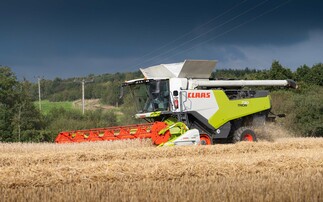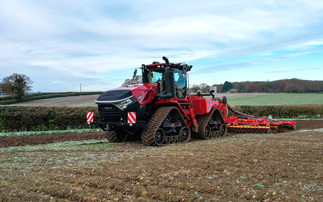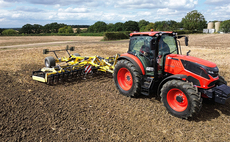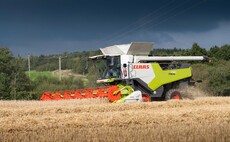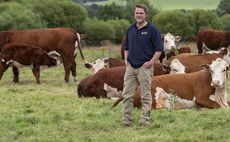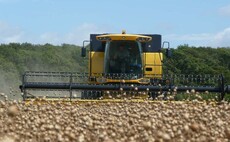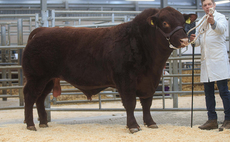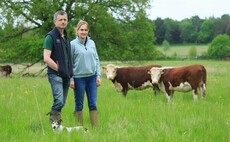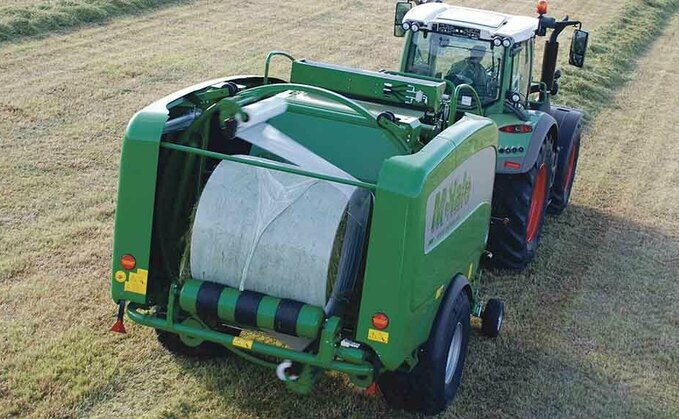
Contractor Andrew Brown has been an advocate of the McHale Fusion baler-wrapper combination for almost a decade, and has recently extended the baling concept to include film-on-film wrapping.
Arguably one of the most recent and significant innovations introduced by McHale on its Fusion 3-Plus combi-baler is film-on-film technology.
This enabled the ability to apply plastic film in the bale chamber to secure the bale instead of using net or twine. Once secured in the bale chamber, the bale is transferred to the wrapper table, where it is sealed from the elements using plastic wrap in the same way that a netted bale would be.
But why? Using plastic film to ‘tie' the bale in the chamber has several benefits, says the manufacturer.
From the environmentalists' perspective, the primary consideration would be that plastic film is 100 per cent recyclable, whereas net-wrap is not. You also have only one type of waste to deal with.
The second consideration, which is of benefit to the farmer, is that film-on-film bales provide superior shape retention, making them firmer and easier to handle, in turn improving bale quality.
Staffordshire contractor Andrew Brown explains: "With netting, even if you triple-wrap the bale in the chamber, the moment pressure is released from the rollers, the netting will always stretch a little bit, which allows the bale to relax.
"You do not get that ‘relaxing' with film-wrap, so the bale stays perfectly formed.
"We have run McHale Fusion 3 and Fusion 3-Plus balers side-byside in the same field, and you can immediately see the difference.
"The film-on-film bales are always tightly packed, with firm square shoulders and a well-formed circumference."
Mr Brown started contracting 20 years ago and has been baling ever since. Today as a specialist baling contractor, he runs no less than five McHale balers, including three Fusion models and two McHale V660 variable chamber machines for hay and straw.
"I started using McHale Fusion balers in 2010," says Mr Brown.
"I still keep a Fusion 2 model for back-up. However, most silage baling is done with the Fusion 3 models, which in a typical year will total around 22,000 bales.
"I purchased my first Fusion 3-Plus version last year. To be honest, it was a huge gamble, not only because it required a greater investment, but also because I was not sure if any of that investment would be returned on its trade-in value.
"The other consideration was my customers," concedes Mr Brown.
"Film-on-film adds about a 15 per cent increase to the price of each bale, and when I bought the baler, I only had one farmer who had specifically stated he wanted film-on-film bales."
So what difference does film-on-film make to the design of the baler? The answer is very little. In fact the McHale Fusion 3-Plus baler-wrapper is essentially identical to the standard Fusion 3 model.
The difference between them, is the integration of the film intake system on the 3-Plus model, which features a hydraulic pre-stretch roller unit on the film-feeder in front of the bale chamber.
"The beauty of the Fusion 3-Plus is that it can be used with either net or film," says Mr Brown.
Systems
"McHale has done a superb job of combining the net and film intake systems together, and swapping from net to film, and vice-versa, barely takes a couple of minutes.
"If there is a minor downside to using film-on-film, it is that a roll of film lasts only 100 bales, whereas a roll of net wrap will usually manage 300 bales. It also takes slightly longer to film a bale than it does to net-wrap it," says Mr Brown.
"However, on the plus side, if you are putting on six-plus layers of wrap, you no longer have to wait for the wrapping table to empty because the bale chamber is full.
"The Fusion 3-Plus has completely changed my perspective of baling silage. I change my balers every two seasons and, this year, I will be replacing my Fusion 3 with a second Fusion 3-Plus.
"The new baler features weighcell technology, which will enable me to record bale weights, dry matter, field location, the start time and so on, which can be printed out and given to the customer."
He concludes: "Without the support of my local dealer, David Wardman at Wardmans [Matlock], I probably would not have moved onto film-on-film.
"David's encouragement has enabled me to make the transition to Fusion 3-Plus and pass on the benefits to my customers."
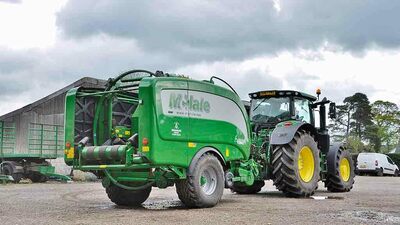
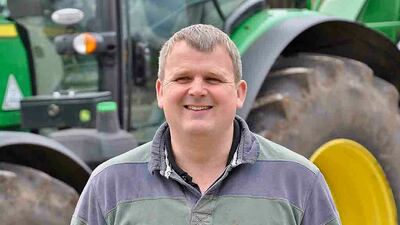
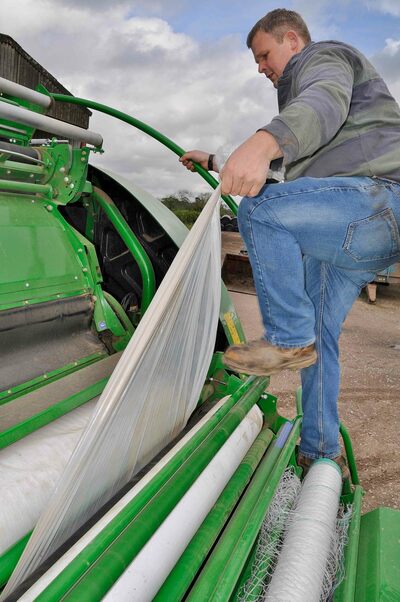
Verdict
Film-on-film wrapping adds to finished bale costs but it produces bales that are tighter with well-defined shoulders and keep their shape. Strecth film rolls have to be replaced more frequently than net but waste plastic storage for recycling is simplified by using the same material for initial binding and for multi-layer wrapping.










